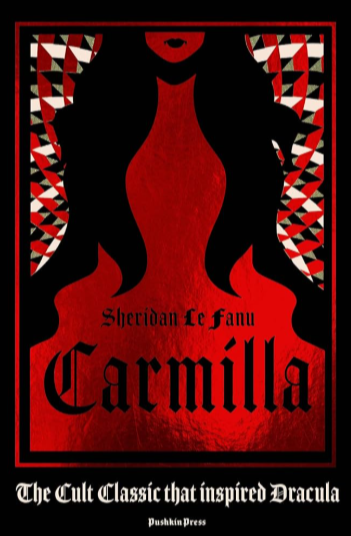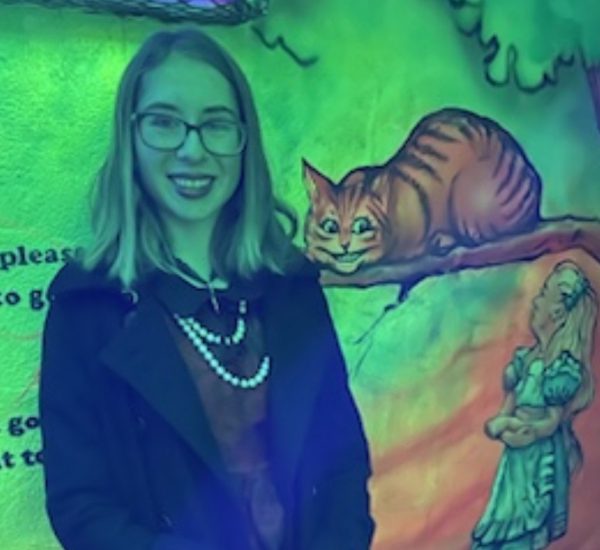
Pop culture has been obsessed with vampires for centuries. The myth began as a spectral, ghost-like creature from Eastern European folklore and moved westward only about 300 years ago, where it gained many of its more well-known traits. Most people attribute Bram Stoker’s Dracula as the first major work of English literature incorporating vampires, but it is actually an adaptation of the 1872 novel Carmilla by Sheridan Le Fanu. Moreover, Carmilla is recognized as historic lesbian literature, focusing on the close relationship between the narrator, Laura, and the titular Carmilla, as they are living mostly secluded in the Austrian countryside. With its description sounding like a perfect mix of classic, gothic, and queer literature, it begs the question: is it any good?
Plot Overview
The prologue begins with a young Laura having a prophetic nightmare about a mysterious woman visiting her in the middle of the night. This dream ends when a stabbing pain of two needles in the throat shocks Laura awake. Later, a lonely, teenage Laura is distraught when she hears of a possible friend’s mysterious death. A strange illness has been sweeping through Styria, leading to the death of many young women. While mourning a future friendship that has turned impossible, Laura and her father meet Carmilla in a carriage accident by their manor-house, where her mother places Carmilla in their care before fleeing. As their relationship grows, Laura begins to take note of Carmilla’s exceedingly strange habits as she resides in their care.
Use of Language
Carmilla is indubitably written with the language of a classic novel. It can be difficult to decode some parts because of the advanced word choice and style, but once you sink into the world of the book, you will notice the beautiful imagery and vivid description of the landscape and its characters. Reading this book will not only transport you to a beautiful world of nature and majesty but may help your own writing as you absorb the vocabulary and sophistication of the author.
Worldbuilding
Although the description of the environment is exceedingly lovely, the world itself is not very lively. We stay in the same location, Laura’s manor-house, for most of the book, and when we do leave, we only get to see nearby ruins and forests, which are populated very sparingly. However, it is important to note that this is likely done purposefully, as the main theme of the novel is the loneliness expressed by Laura. Having few locations and companions truly gives the audience the ability to relate to her desire for friendship. Whether or not this aspect is good or bad really comes down to personal taste and whether or not the specific reader wants a highly populated world or not. The land is mysterious and magical, having closed-off manor houses separated from each other by large expanses of forest. The setting fits perfectly into the gothic, vampire aesthetic of the story and really adds to the ambiance of it all.
Romance
The romance between Carmilla and Laura is never very explicit. Carmilla, being a vampire, never seems to be able to express normal human emotions or form a real relationship with Laura. She instead tends to love-bomb her, telling her the most wonderful things, and yet keeping every personal detail of her life secret from Laura. Of course, in the story of the book, Carmilla never really loved Laura and was instead coaxing her into a state easy to feast upon. This gives the novel the appearance of a lesbian romance without an actual healthy, tangible relationship. Though it is important to mention that not all queer relationships in media have to be flawless to count as representation, and this novel is still a good showcase of queer emotions and situations even while not being a proper romance.
Ending
The ending can come off as a bit abrupt, offering no real closure to Carmilla and Laura’s relationship after Carmilla is discovered as a vampire. Avoiding spoilers, the ending takes place in a nearby ruined village and chapel where the characters learn Carmilla’s true identity. As Laura recounts how the events affected her, we never really see a happy ending, just the end of this specific story. Some may find this annoying and inconclusive, but I believe that this resolution fits with the overall feel of the book and leaves the audience thinking about its events for far longer than a perfect fairytale ending would allow.
True Story?
In the version of Carmilla that was edited by Carmen Maria Machado, it is revealed in the introduction that LeFanu’s story may have been based on real letters focusing on the relationship between two women, speculated to be English-Hungarian, women’s rights advocate Veronika Hausle, and Spanish-Cuban aristocrat, who was sent to Europe just before the Ten Years’ War, Marcia Marén. While Carmilla paints Laura and Carmilla’s relationship as something to be feared and describes Laura feeling somewhat disgusted at a romance with Carmilla, the real relationship between Veronika and Marcia is thought to be more of a classic romance and queer awakening tale set during a time of great struggle for the LGBTQ+ community.
Carmilla is a book I would recommend to anyone interested in vampires, gothic stories, or notable queer literature. It’s certainly not for everyone, and if you prefer happy endings or modern writing styles, it might not be your cup of tea- or your cup of blood. For those who are interested, it’s a quick read of only about 140 page,s and it’s available from most online bookstores, as well as being available through the local free library’s online request system.







